On the Giza plateau, located on the banks of the Nile River on the northeast border of the Giza Governorate in Egypt, one can find many of the iconic Egyptian temples, monuments, and pyramids. Pyramids of Menkaure, Khafre, the Great Pyramid of Khufu, and the Great Sphinx are located in this area, as well as many other sacred structures.
Burial sites of less acclaimed individuals such as magistrates, high officials, and building supervisors are located here as well – these are those who wanted the prestige of being buried in the Giza area, but did not have the ability to have large pyramids built in their honor.
At one time, the Giza plateau was a desert site with small villages, shops, and terraces, but now Cairo’s expansion is moving the city dangerously close to the plateau. The pyramids and other favorite tourist structures dot the landscape, and archaeologists constantly excavate in the area in the belief that further examples of ancient construction are waiting to be found.
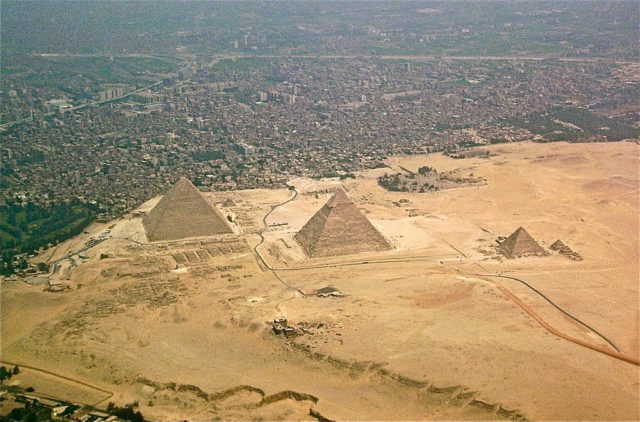
While Hollywood might have us believe the monuments were the work of Hebrew slaves, evidence suggests that all Egyptians were required to serve several months of the year working on public construction projects. The workers were well fed, had good medical and dental care, and by and large were better off than when they were not in public service.
Until Napoleon Bonaparte’s campaign in Egypt from 1798 to 1801, little interest was taken in the plateau other than by local tourists and grave robbers. As can be seen at the top of the Great Pyramid of Khufu, many of the pyramids were once covered in highly polished limestone that reflected the sun like glass. Over thousands of years, the limestone coverings have worn away, been removed by the builders of other structures, or experienced vandalism by those wishing to bring home a souvenir. Napoleon hired people to document the monuments, which brought the structures to the attention of archaeologists and scholars who came in to explore, restore, and preserve the ancient edifices.
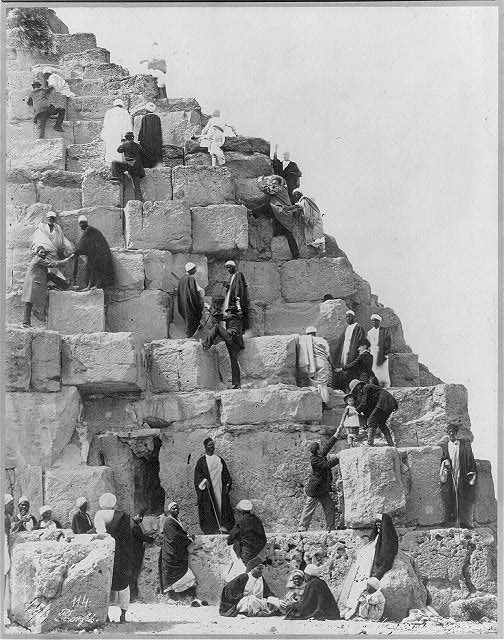
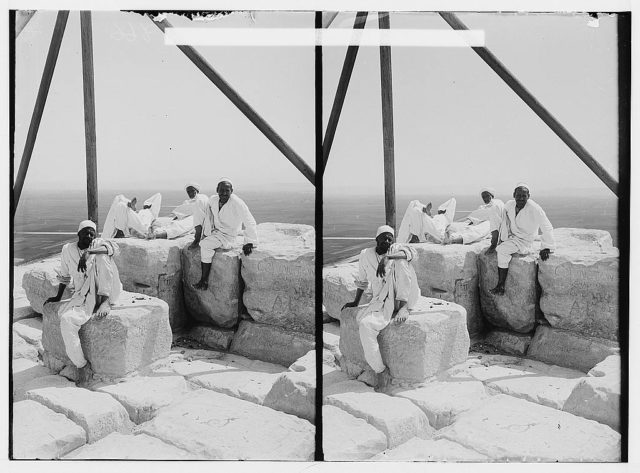
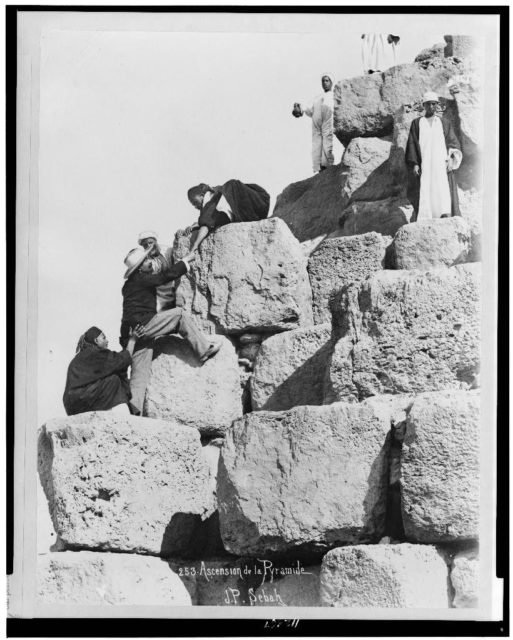
The occupation of Egypt by the British lasted from 1882 to 1914, after which the country was a British protectorate until it became a republic in 1953. Egypt has, since then, been involved in many power struggles between Arab and Muslim countries.
During the Occupation and early years of the Protectorate, wealthy British tourists swarmed to Egypt to explore the monuments. The discovery of the tomb of Tutankhamen in 1922 served to increase interest in Egypt and launched an Egyptian revival period in Britain. Because of this, wearing Egyptian jewelry and decorating one’s home in genuine or replicated Egyptian artifacts became fashionable among British people.
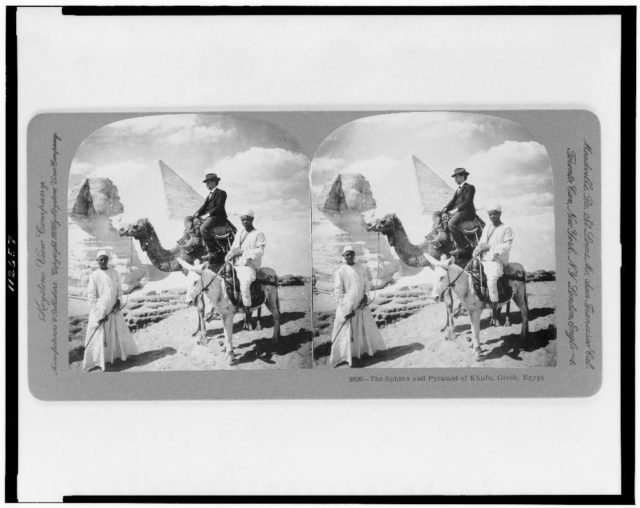
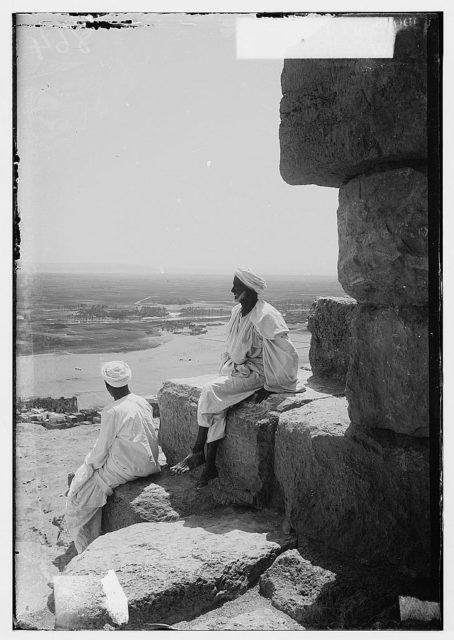
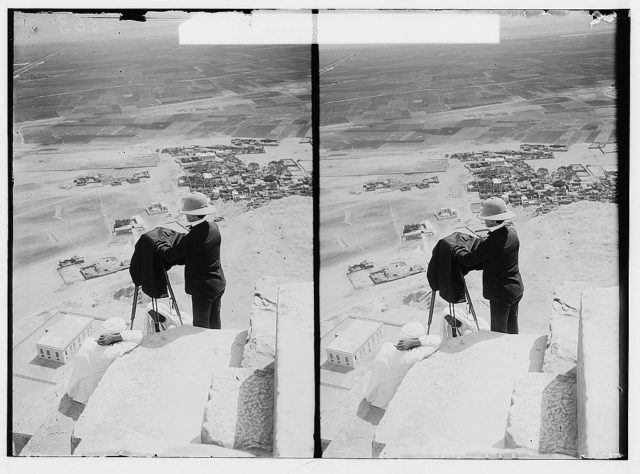
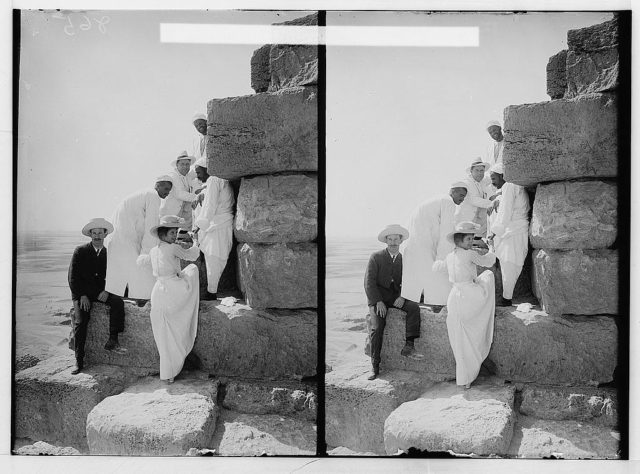
During that time the pyramids, the Sphinx, and underground tombs were not as protected as they are now. Visitors could climb the pyramids to have their pictures taken and enjoy a catered lunch in tombs surrounded by ancient hieroglyphics. Some even used the cool shade of the temple’s interiors for a midday nap. Professional photographers often scaled to the top of pyramids to get the very best shots, Mail Online reported.
Due to the strict social rules involving manner of dress during this time, visitors were forced to tour in full three-piece suits for the men and long skirts with several layers of petticoats, along with tightly laced corsets, heavy stockings, and high-topped shoes, for the women. Rather than loose, cool bonnets, women wore heavy hats decorated with flowers, feathers, and ribbons. Many of the suits and dresses were made in dark colors that increased absorption of heat from the desert sun. Men dared not remove their jackets and expose their shirt sleeves, while for women to remove any of their required undergarments would have been scandalous.
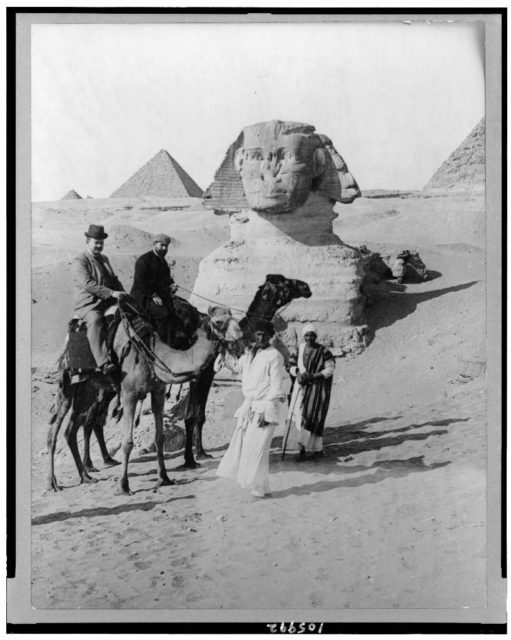
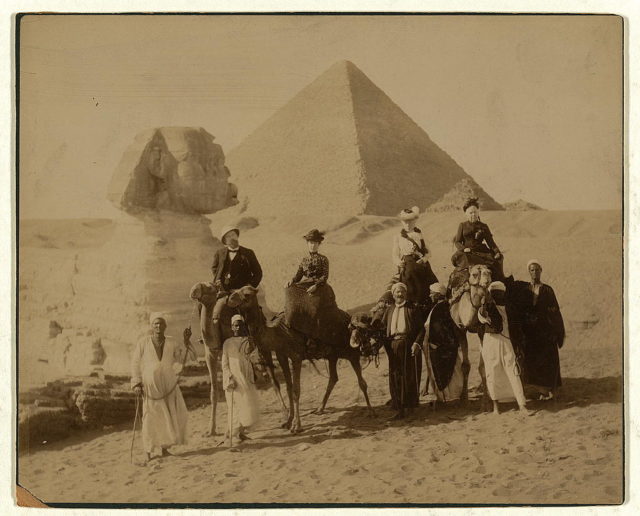
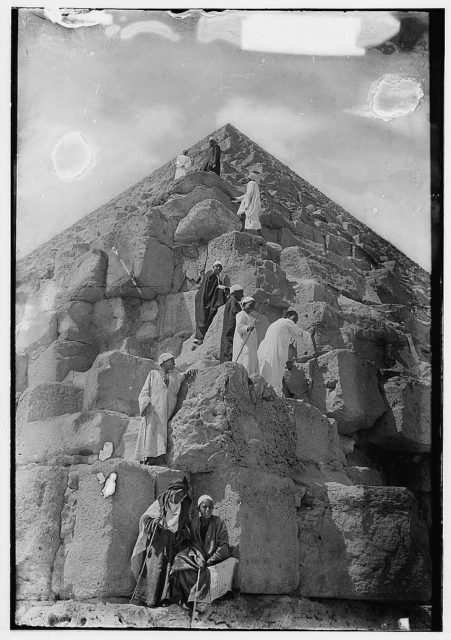
After the 1920s, men were able to trade in their bowler hats for cooler straw hats. Camels were the preferred mode of transportation, but women in those days were required to ride side-saddle.
The native Egyptian guides must have been extremely amused by the restrictive dress code of the Western tourists.
